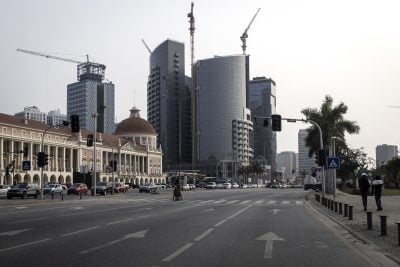Part of the funds came from the German Assisted Settlement Programme (GASP), which shouldered the burden of roads, schools, public health facilities and other amenities to enable the settlers ease into a new life.
In total, between 1976 and 1993, some 47,700 ha had been set aside for settlements: 8,060 plots were meant to be occupied but, according to GASP records, at the time only 4,998 plots were occupied. Mzee Kenyatta’s administration settled members of the Kikuyu community in these settlements and gave them title deeds to signify ownership.
Sadly, the majority of the indigenous communities were never granted the titles and remain as squatters, with their only claim to their humble homesteads being ancestral affiliation.
GASP’s records further note an interesting observation that can be traced as far back as 1980, when the Hindi-Magogoni Settlement Scheme was established. At the time, the new inhabitants were aware that a “naval base and an oil pipeline” were going to be built, which led to speculation and saw the land being exclusively allotted to dignitaries of Lamu and senior civil servants.
Baddi has a good grasp of his hometown and keeps copious records. Apparently, his warnings and demand for the environmental report to be made public were dismissed. Stephen Ikua, then district commissioner of Lamu county, took a dim view of the sentiments of the teacher turned environmental defender.
The ‘first land grab’ began in the 1970s and the proposed port project is now being viewed as ushering the ‘second land grab’, which will dispossess vulnerable members of the community
Ikua told African Business, “Take it from me, in December 2012, the first ship will dock on Lamu Port. The port cannot be stopped.” A $484m contract to construct the first three berths of the por was awarded to China Communications Construction Company (CCCC) in 2013, but the first ship is yet to dock.
The 70-year-old Baddi is saddened at how senior government officials ignored the warning signs of a simmering conflict that were all too evident. The fatal events of the last three months and near-collapse of the tourism sector have taken a toll on him, as he recalls that all his warnings have been vindicated by five different and independent sets of groups and experts.
A feasibility study undertaken by Japan Port Consultants in 2010 seemed to prove all of Baddi’s fears correct. It found the new port was going to alter the face of the ecologically, culturally and socially sensitive region irreversibly.
Baddi was again proved right in 2012 when indigenous people’s rights expert, Kanyinke Sena, visited and compiled his report Lapsset and Indigenous Peoples in Kenya for the International Working Group on Indigenous Affairs (IWGIA). Sena’s report tallied with all the fears that Baddi had raised.
Troubling reports
The environmental report released in 2013 by Heztech Engineering Services, contracted by the Transport Ministry, was even more candid. It picked out five key areas that faced “major impacts”. These included water quality, fisheries, mangroves, archaeological sites and land ownership. When the Truth, Justice and Reconciliation Commission (TJRC) released its report in 2013, the same issue of land ownership was also mentioned as a potential spark for conflict.
According to the Lands Ministry, “Squatter existence at the Kenyan coast is historical, dating back to pre-independence. Coastal land was previously controlled by the Persians, Arab Sultans and the British”, the ministry says in its report Current Status of Land in the Coast.
“Settlement of coastal squatters is still ongoing and a number of schemes are yet to be completed and each is unique, taking its own different shape.”
A task force formed to look at the issue of land problems at the coast by the government presented its report in 2010 and recommended that “freehold adjudication titles held by absentee landlords” be revoked immediately. This has never been done.
As we went to press President Kenyatta revealed, as a result of an audit he ordered in 2013, that 500,000 of Lamu’s 1,550,092 acres had been grabbed by 22 companies between 2011 and 2012 for speculation within the Lapsset corridor. “Land was grabbed strategically for speculation purposes targeting Lapsset: 13 of the 21 berths of Lamu port have been allocated to grabbers.
The Lamu Special Economic zone was allocated to private companies over the same period.” He said this in a TV broadcast to the nation as he revoked titles by the 22 companies for the allotted 500,000acres. The 2013 audit follows the 2010 audit whose recommendations were never implemented.
Want to continue reading? Subscribe today.
You've read all your free articles for this month! Subscribe now to enjoy full access to our content.
Digital Monthly
£8.00 / month
Receive full unlimited access to our articles, opinions, podcasts and more.
Digital Yearly
£70.00 / year
Our best value offer - save £26 and gain access to all of our digital content for an entire year!

 Sign in with Google
Sign in with Google 




